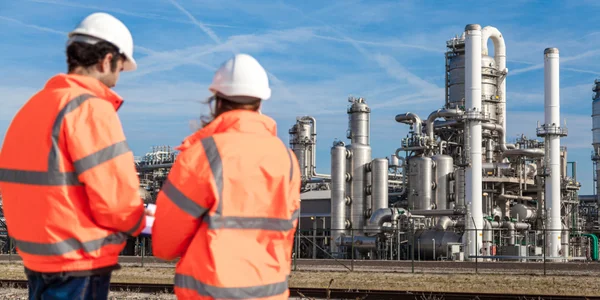Odour Control
- Máy lọc tĩnh điện
- Nhà túi khí ngược
- Bộ lọc vải
- Bộ lọc điện lai
- Khử lưu huỳnh khí thải
- Máy làm mát cưỡng bức
- Máy chà sàn
- Nhà máy làm sạch khí
- Lốc xoáy
- Đa nhân bản
- Hệ thống khử mùi VOC +
- Hệ thống hút bụi
- Hệ thống hút khói
- Thiết bị chống cháy nổ
- Quạt và máy thổi
- Xử lý nước thải
- Bộ trao đổi nhiệt không khí sang không khí
Văn phòng
TRỤ SỞ CHÍNH

Đức
-
Bộ lọc chuyên sâu Himenviro Technologies GmbH
Neustraße 45 - 49, 42553, Velbert, Deutschland/Đức - +49 20534200990
VĂN PHÒNG KHU VỰC

Anh quốc
-
Bộ lọc chuyên sâu Himenviro UK Limited
47, Bath Street WS13BX, Wallsall West Midlands, Vương quốc Anh - +44 1922 628893
VĂN PHÒNG KHU VỰC

Các Tiểu Vương Quốc Ả Rập Thống Nhất
-
Bộ lọc chuyên sâu Himenviro Technologies FZE – LLC
Trung tâm thương mại, Khu thương mại tự do Sharjah Publishing City, Sharjah, UAE - +971-556074697
VĂN PHÒNG KHU VỰC

Ấn Độ
-
Intensiv-Filter Himenviro Private Limited
D-247/11, Khu vực 63, Noida - 201301, Uttar Pradesh, Ấn Độ - +91-120-4642-500
VĂN PHÒNG KHU VỰC




Ấn Độ
-
Intensiv-Filter Himenviro Private Limited
D-247/11, Khu vực 63, Noida - 201301, Uttar Pradesh, Ấn Độ - +91-120-4642-500
VĂN PHÒNG KHU VỰC




Ấn Độ
-
Intensiv-Filter Himenviro Private Limited
D-247/11, Khu vực 63, Noida - 201301, Uttar Pradesh, Ấn Độ - +91-120-4642-500
Hệ thống khử mùi VOC + cho ngành công nghiệp
Hợp chất hữu cơ dễ bay hơi (VOC) hiện đang được thải vào khí quyển trong rất nhiều quy trình sản xuất sử dụng chất hữu cơ.
Ứng dụng
- Buồng sơn & phun sơn
- Hoàn thiện công nghiệp
- Quy trình phủ
- Quá trình hóa học
- Sản xuất nhựa và cao su
- Quy trình dược phẩm
- Nước thải pound hơi và khí


Quá trình
- Nồng độ dung môi tối đa: 11.000 mg/Nm3
- Nồng độ dung môi cho hoạt động tự động nhiệt: 1,3-1,7 g/ Nm3.
- Nhiệt độ hoạt động của thiết bị RTO là trên 750 độ C và có thể đạt tới 1100 độ C đối với một số ứng dụng
- Phương tiện gốm có tuổi thọ cao
- Cách ly bên trong để tiết kiệm năng lượng & nhiệt hiệu suất là > 98%
Dịch vụ của chúng tôi
Nghiên cứu tình huống
Những câu hỏi thường gặp
1. What is an odour control system?
An odour control system is a setup that removes bad smells from the air. It uses different methods to clean the air, making it more pleasant and safe to breathe. These systems are important in places like factories, sewage plants, and waste treatment facilities where strong odours can be a problem.
2. How does an odour control system work?
An odour control system works by capturing and treating smelly air. It uses methods like chemical scrubbing, where chemicals neutralize bad smells, or bio-filtration, where tiny organisms break down odour-causing substances. The cleaned air is then released back into the environment without the unpleasant odours.
3. Why are odour control systems important in industries?
Odour control systems are important in industries because they help keep the air clean and safe. Bad smells can be harmful to workers and nearby communities. Controlling odours also helps companies follow environmental rules and maintain good relationships with the public.
4. What types of odour control technologies are available?
There are several types of odour control technologies:
- Hệ thống hấp phụ: Use materials like activated carbon to trap odour molecules.
- Chemical Scrubbers: Use chemicals to neutralize odorous gases.
- Biological Oxidation Systems: Use microorganisms to break down odour-causing compounds.
Each type is chosen based on the specific needs of the facility.
5. How do you choose the right odour control system for your facility?
Choosing the right odour control system depends on factors like the type of odour, the size of the area, and budget. It’s important to assess the specific needs of your facility, consider the efficiency of different systems, and consult with experts to select the most suitable solution.
6. Can odour control systems handle multiple types of odours?
Yes, many odour control systems are designed to handle various types of odours. For example, chemical scrubbers can neutralize different odorous gases, and bio-filters can treat a range of organic smells. The effectiveness depends on the system’s design and the specific odours present.
7. What maintenance is required for odour control systems?
Maintenance for odour control systems includes regular inspections, replacing filters or media, and ensuring all parts are functioning properly. Routine maintenance helps the system work efficiently and extends its lifespan. It’s important to follow the manufacturer’s guidelines for specific maintenance tasks.
8. Are odour control systems environmentally friendly?
Many odour control systems are designed to be environmentally friendly. For instance, bio-filters use natural processes involving microorganisms to break down odorous compounds without harmful chemicals. Choosing the right system can help minimize environmental impact.
9. How effective are odour control systems in eliminating industrial odours?
Odour control systems can be highly effective in reducing or eliminating industrial odours when properly designed and maintained. The efficiency depends on factors like the type of system, the specific odours being treated, and regular maintenance. Consulting with experts can help achieve optimal results.
10. What factors should be considered when installing an odour control system in India?
When installing an odour control system in India, consider factors like local environmental regulations, the specific odour issues of your facility, climate conditions, and availability of maintenance services. It’s also important to choose a system that fits your budget and operational needs.








